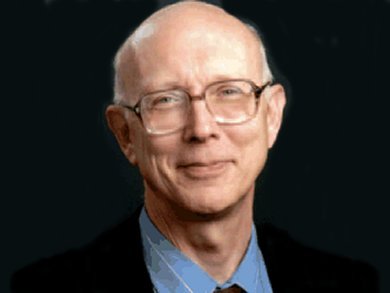Professor George M. Whitesides, Harvard, Cambridge, MA, USA, celebrates his 75th birthday on August 3, 2014.
George M. Whitesides, born August 3, 1939, in Louisville, KY, USA, gained a Ph.D. in chemistry from the California Institute of Technology, Pasadena, CA, USA. After holding a position as an assistant professor at the Massachusetts Institute of Technology (MIT), Cambridge, MA, USA, he moved his laboratory to the Department of Chemistry at Harvard University, his alma mater, in 1982. He has served tenures as chairman of the Chemistry Department there from 1986–1989 and associate Dean of the Faculty of Arts and Sciences from 1989–1992.
Currently, Whitesides is the Woodford L. and Ann A. Flowers University Professor at Harvard. His current research interests include “physical and organic chemistry, materials science, biophysics, complexity, surface science, microfluidics, self-assembly, micro- and nanotechnology, science for developing economies, origin of life, and cell-surface biochemistry”.
Whitesides is the author of more than 1200 scientific articles and holds more than 50 patents. He has co-founded over twelve companies including Genzyme, GelTex, Theravance, Surface Logix, Nano-Terra, and WMR Biomedical. He serves on the editorial advisory boards of several scientific journals, including Angewandte Chemie, Advanced Healthcare Materials, Chemistry & Biology, and Small.
Among other awards, Whitesides is the recipient of the Kyoto Prize (2003), the Priestly Medal (2007), the Othmer Gold Medal (2010), and the King Faisal International Prize in Chemistry (2013).
Selected Publications
- Three-Dimensional Paper-Based Model for Cardiac Ischemia,
B. Mosadegh, B. E. Dabriri, M. Lockett, R. Derda, P. Campbell, K. K. Parker, G. M. Whitesides,
Adv. Healthcare Mater. 2014, 3, 1036-1043.
DOI: 10.1002/adhm.201300575 - Introducing Ionic and/or Hydrogen Bonds into the SAM//Ga2O3 Top-Interface of AgTS/S(CH2)nT//Ga2O3/EGaIn Junctions,
C. M. Bowers, K. C. Liao, H. J. Yoon, D. Rappoport, M. Baghbanzadeh, F. C. Simeone, G. M. Whitesides,
Nano Letters 2014, 14, 3521-3526.
DOI: 10.1021/nl501126e - Separation and Enrichment of Enantiopure from Racemic Compounds Using Magnetic Levitation,
X. Yang, S. Y. Wong, D. K. Bwambok, M. B. J. Atkinson, X. Zhang, G. M. Whitesides, A. S. Myerson,
Chem. Comm. 2014, 50, 7548–7551.
DOI: 10.1039/C4CC02604G - Soft Actuators and Robots that are Resistant to Mechanical Damage,
R. V. Martinez, A. Glavan, C. Keplinger, A. Oyetibo, G. M. Whitesides,
Adv. Func. Mater. 2014, 24, 3003–3010.
DOI: 10.1002/adfm.201303676 - Replacing AgTSSCH2-R with AgTSO2C-R in EGaIn-Based Tunneling Junctions Does Not Significantly Change Rates of Charge Transport,
K. C. Liao, H. J. Yoon, C. M. Bowers, F. C. Simeone, G. M. Whitesides,
Angew. Chem. Int. Ed. 2014, 53(15), 3889–3893.
DOI: 10.1002/anie.201308472 - Using Magnetic Levitation to Separate Mixtures of Crystal Polymorphs,
Manza B. J. Atkinson, David K. Bwambok, Jie Chen, Prashant D. Chopade, Martin M. Thuo, Charles R. Mace, Katherine A. Mirica, Ashok A. Kumar, Allan S. Myerson, George M. Whitesides,
Angew. Chem. Int. Ed. 2013.
DOI: 10.1002/anie.201305549
Levitating Crystals, ChemViews Mag. September 2013.
Magnetic levitation separates crystal polymorphs by their density - Enzymes as Catalysts in Synthetic Organic Chemistry [New Synthetic Methods (53)],
George M. Whitesides, Chi-Huey Wong,
Angew. Chem. Int. Ed. 1985, 24(8), 617–638.
DOI: 10.1002/anie.198506173
- Soft Lithography,
Younan Xia, George M. Whitesides,
Angew. Chem. Int. Ed. 1998, 37(5), 550–575.
DOI: 10.1002/(SICI)1521-3773(19980316)37:5<550::AID-ANIE550>3.0.CO;2-G
Articles featured on ChemistryViews.org
- Pneumatic Elastomers As Robotic Arms,
ChemViews Mag. January 2011.
Methodology based on embedded pneumatic networks enables large-amplitude actuations in soft elastomers by pressurizing embedded channels - Levitating Analyte,
ChemistryViews.org June 2010.
New technique that uses magnetic levitation to characterize food and water samples by their density measurements. - Long Fuse,
ChemViews Mag. June 2010.
George Whitesides describes how dots of salt can be used to transmit information for times electronics or batteries fail. - Free Virtual Event: Celebrate 125 Years of Angewandte Chemie!
G. Whitesides: Simplicity as a Strategy in Academic Research
|
H. Michelle Grandin, Marcus Textor, George M. Whitesides |




